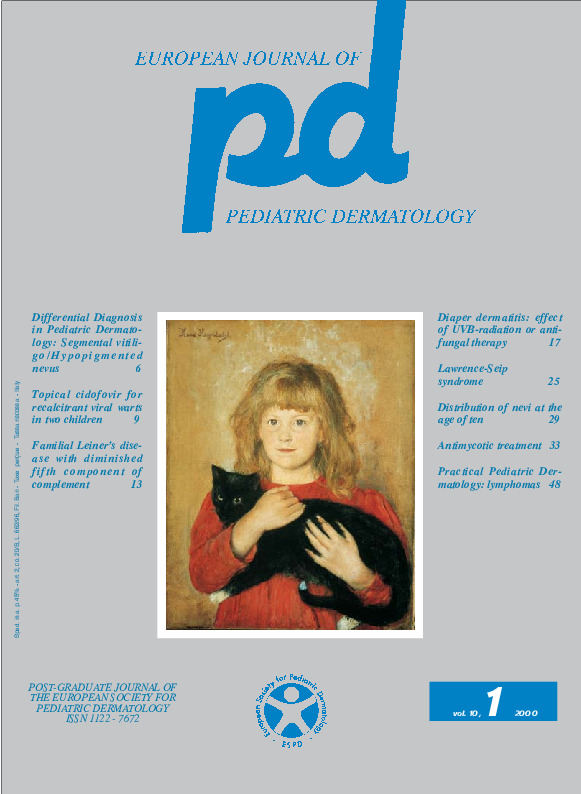Segmental vitiligo/Hypopigmented nevus.
Downloads
How to Cite
Bonifazi E., Ciampo L. 2000. Segmental vitiligo/Hypopigmented nevus. Eur. J. Pediat. Dermatol. 10 (1):6-8.
pp. 6-8
Abstract
Vitiligo and hypopigmented nevus are responsible for white cutaneous patches. The latter can appear in the first years of life.Vitiligo is an acquired disease. It is characterized by an autoimmune disorder leading to the destruction of the melanocytes. On the other hand, hypopigmented nevus is a malformation disorder occurring during the fetal life. It probably consists of a defective transport of melanin inside the keratinocyte. Hypopigmented nevus often affects only a cutaneous segment.
Hypopigmented nevus should be differentiated from segmental vitiligo, which is a clinical variant of vitiligo, more frequent in children than in adults. Due to significantly different clinical course, the differential diagnosis between the two disorders is important. Hypopigmented nevus is less white and thus less visible of vitiligo. Moreover, it persists unchanged with time. On the other hand, segmental vitiligo is an evolutive disease and thus may worsen or, more often in children, improve and almost completely regress. The differential diagnosis between the two disorders also leads to a different therapeutical approach.
Keywords
Segmental vitiligo, Hypopigmented nevus

